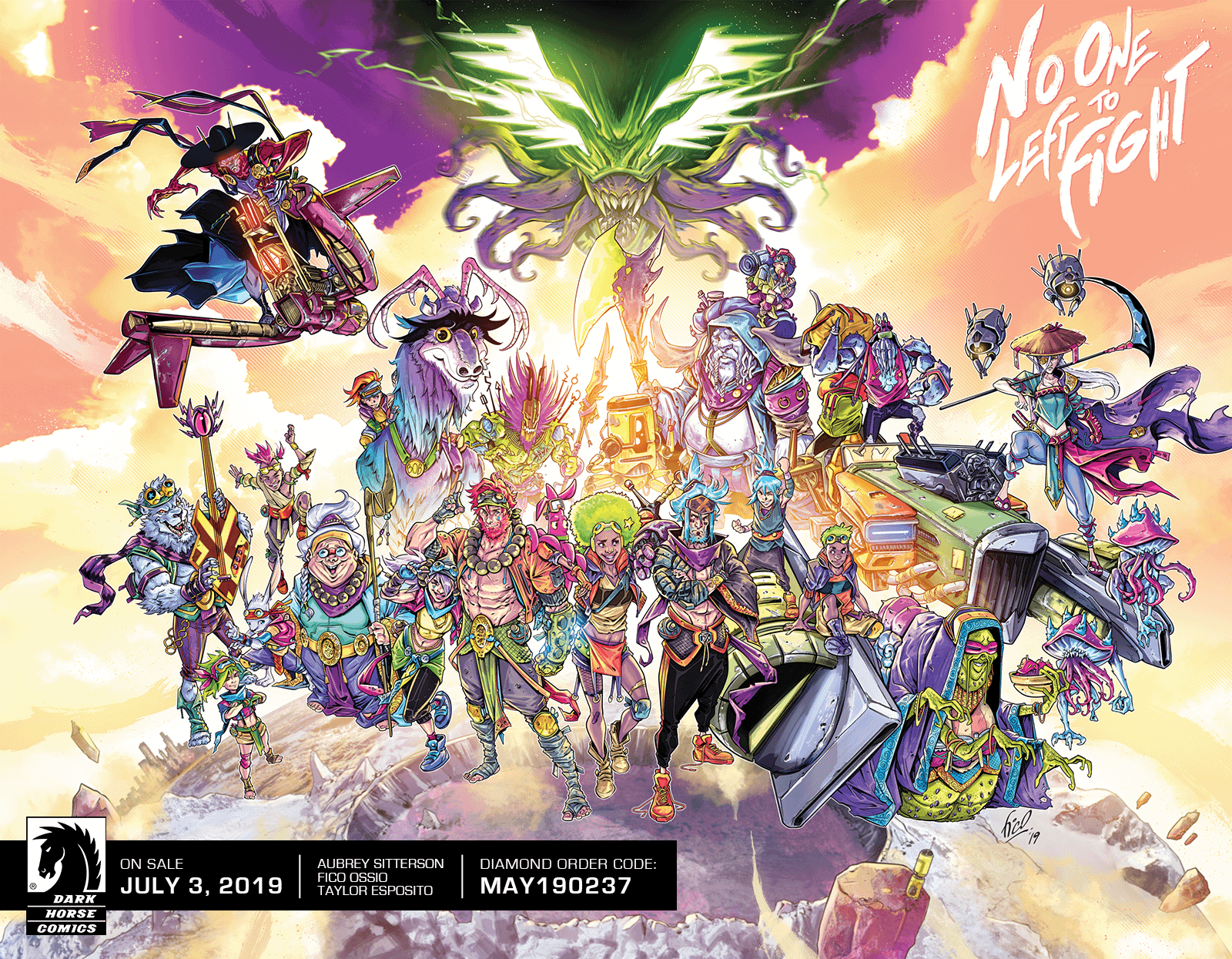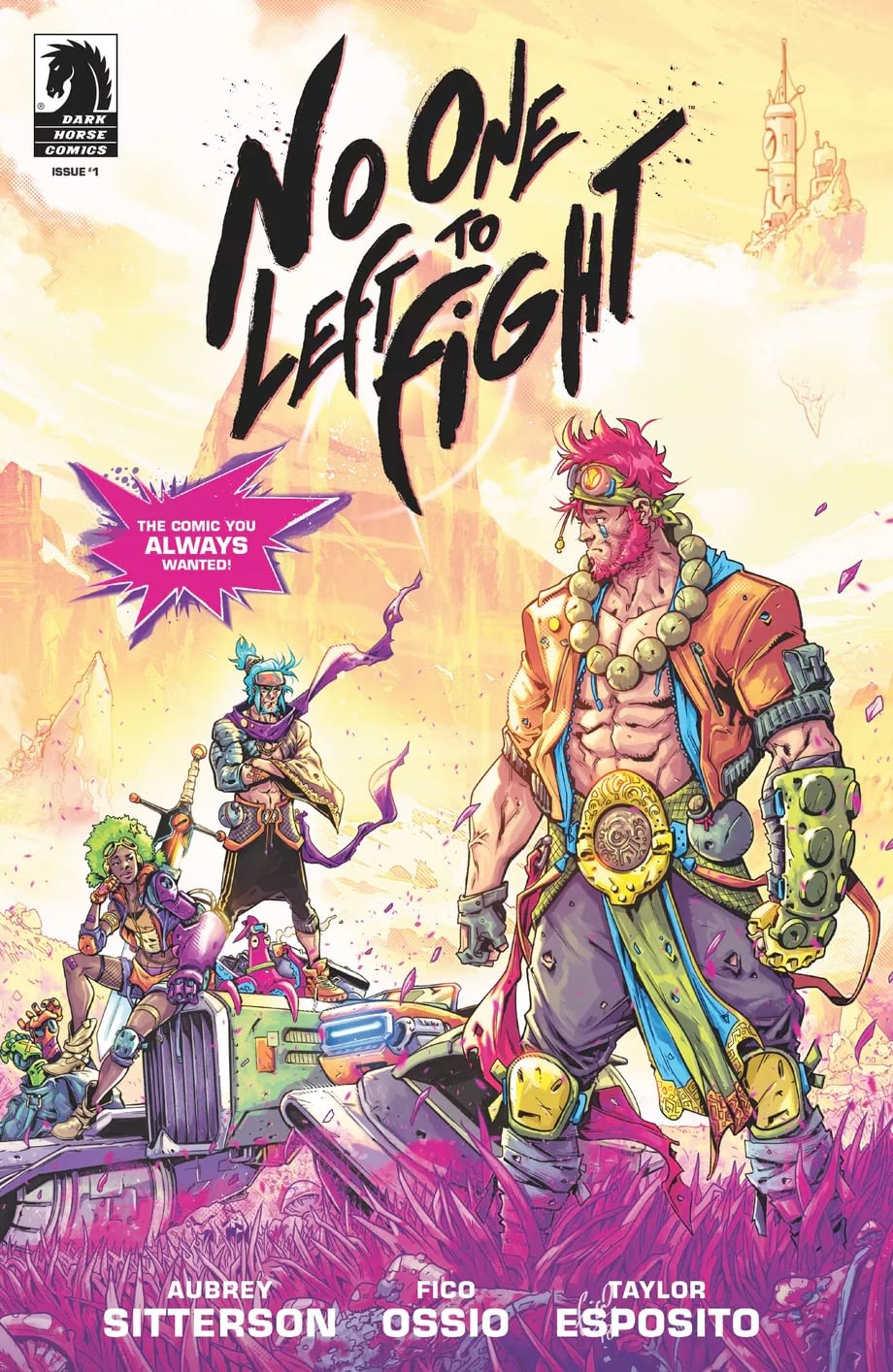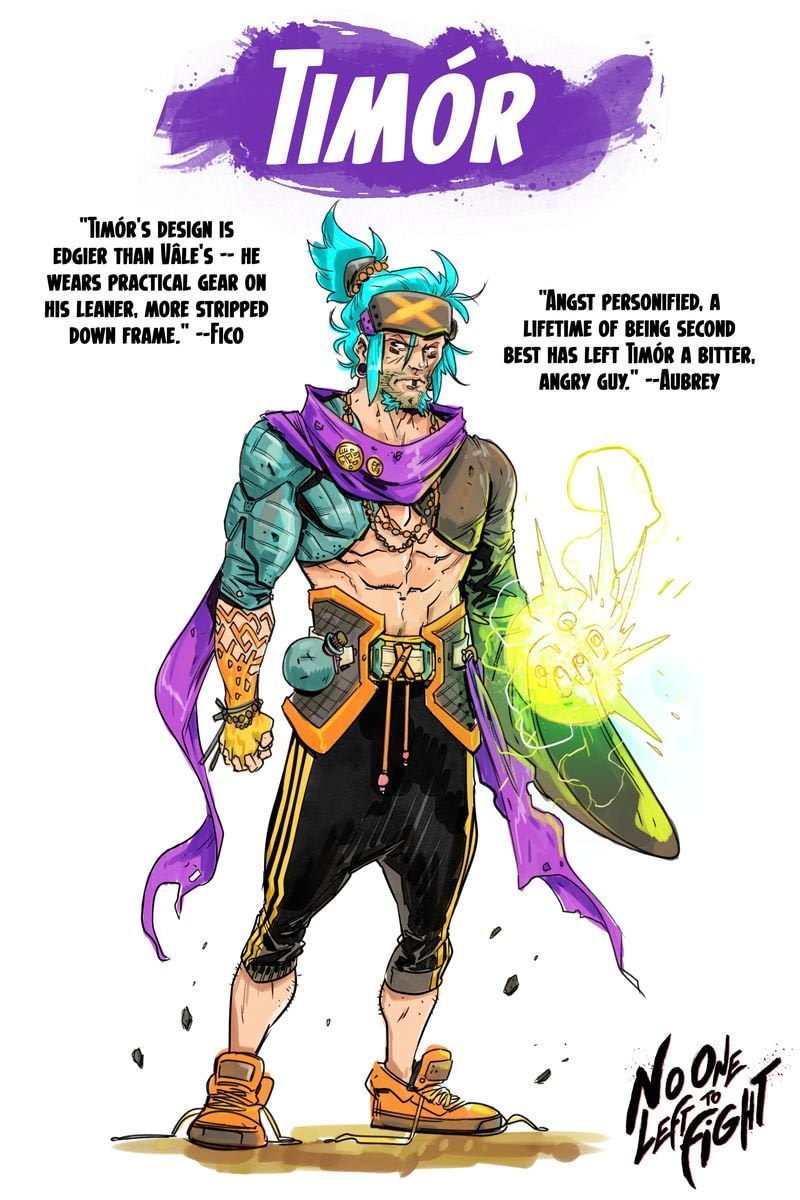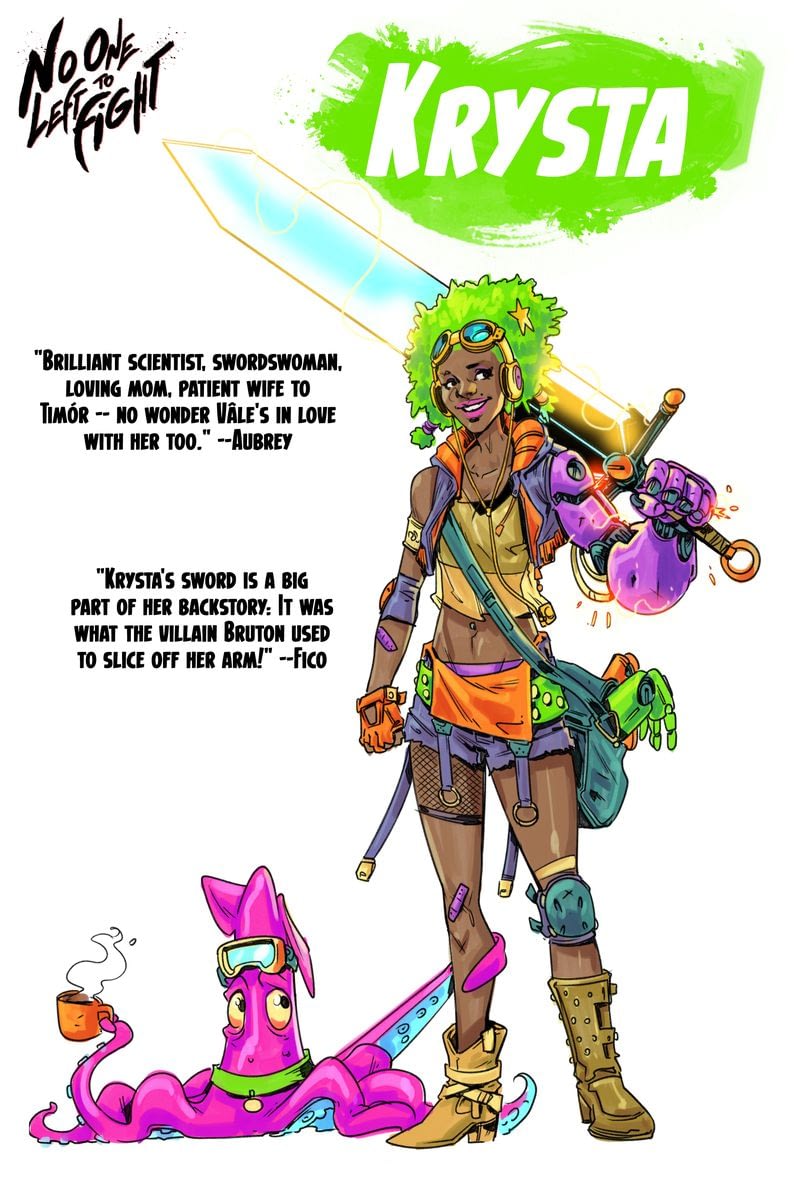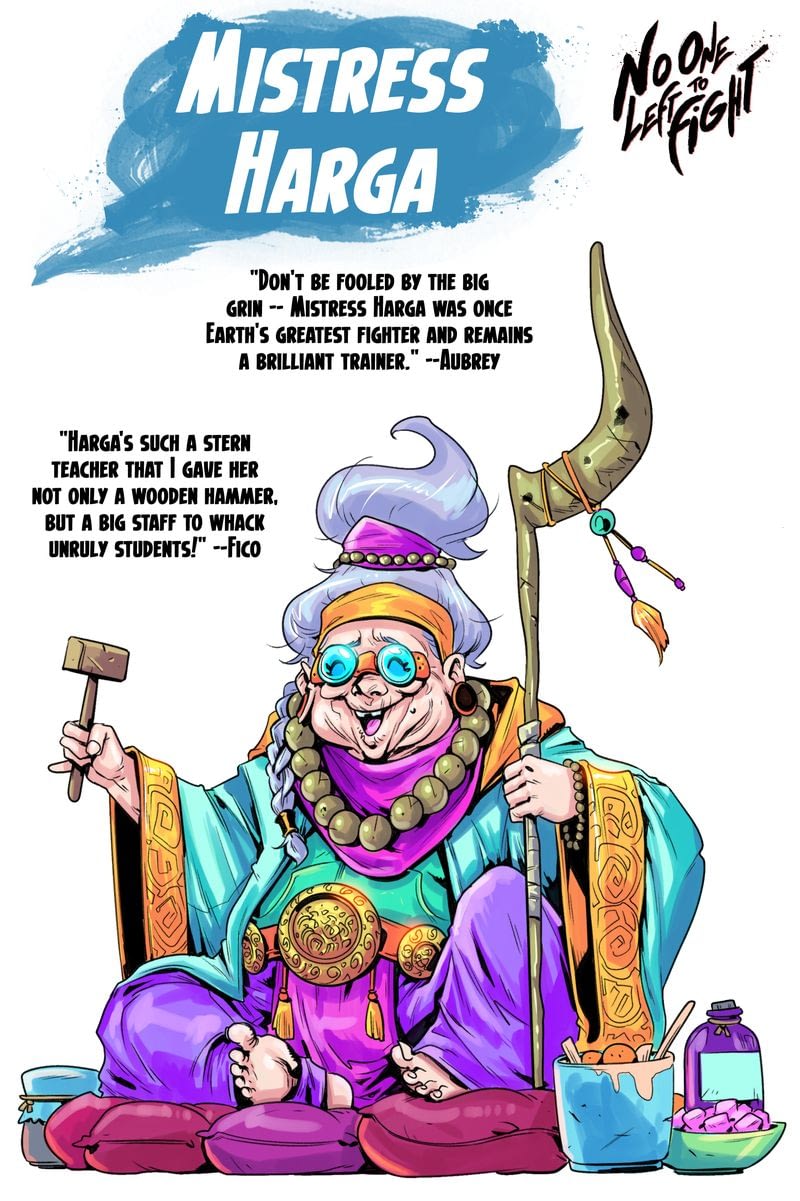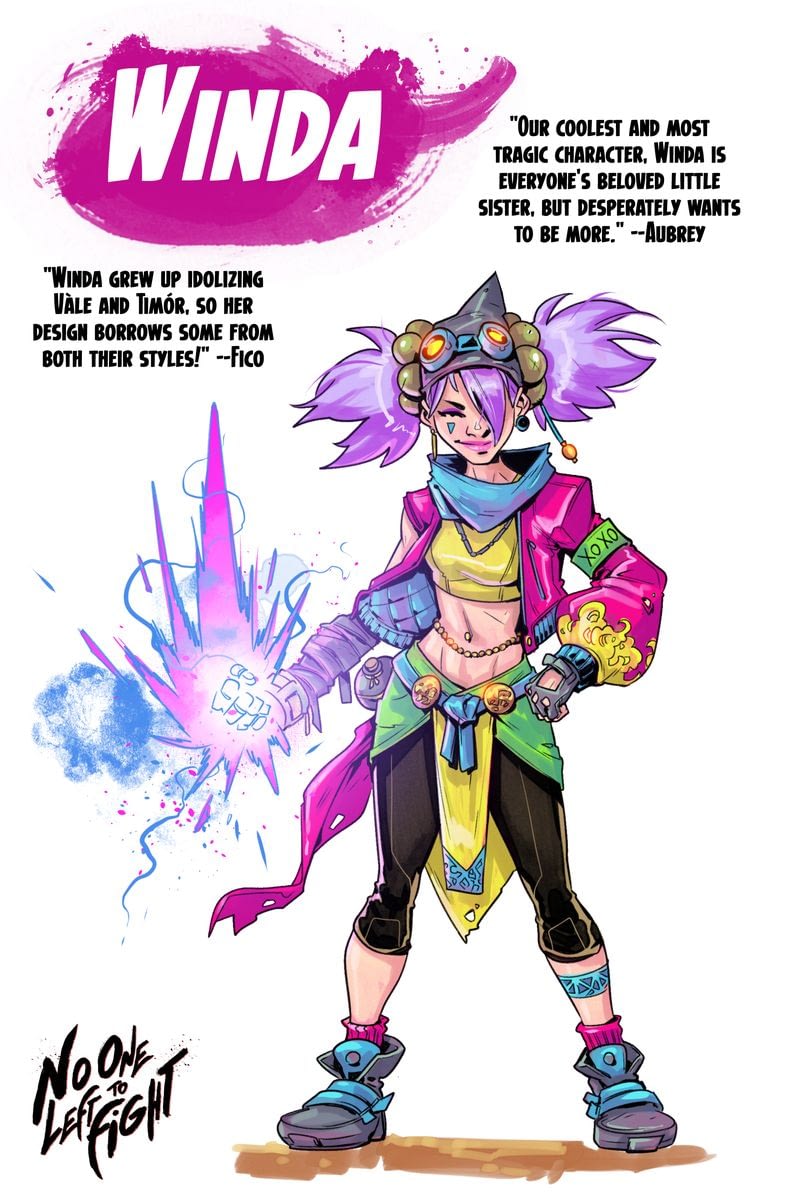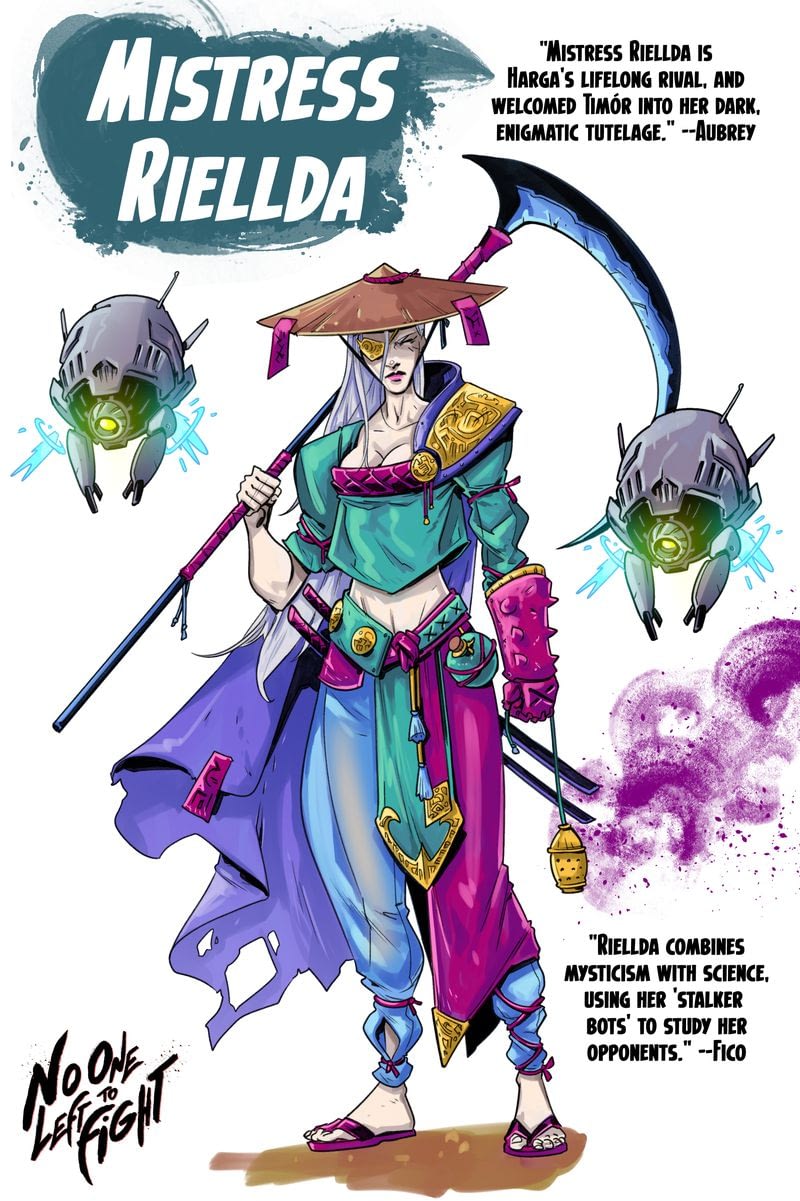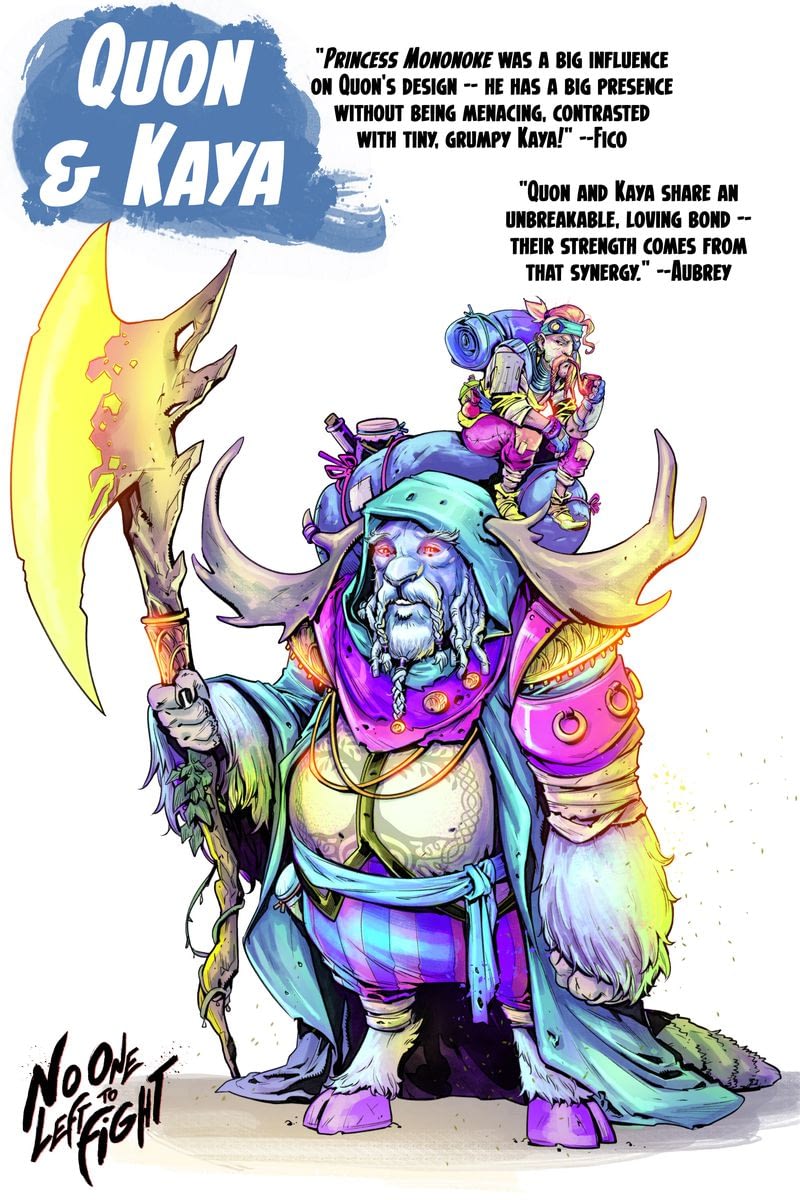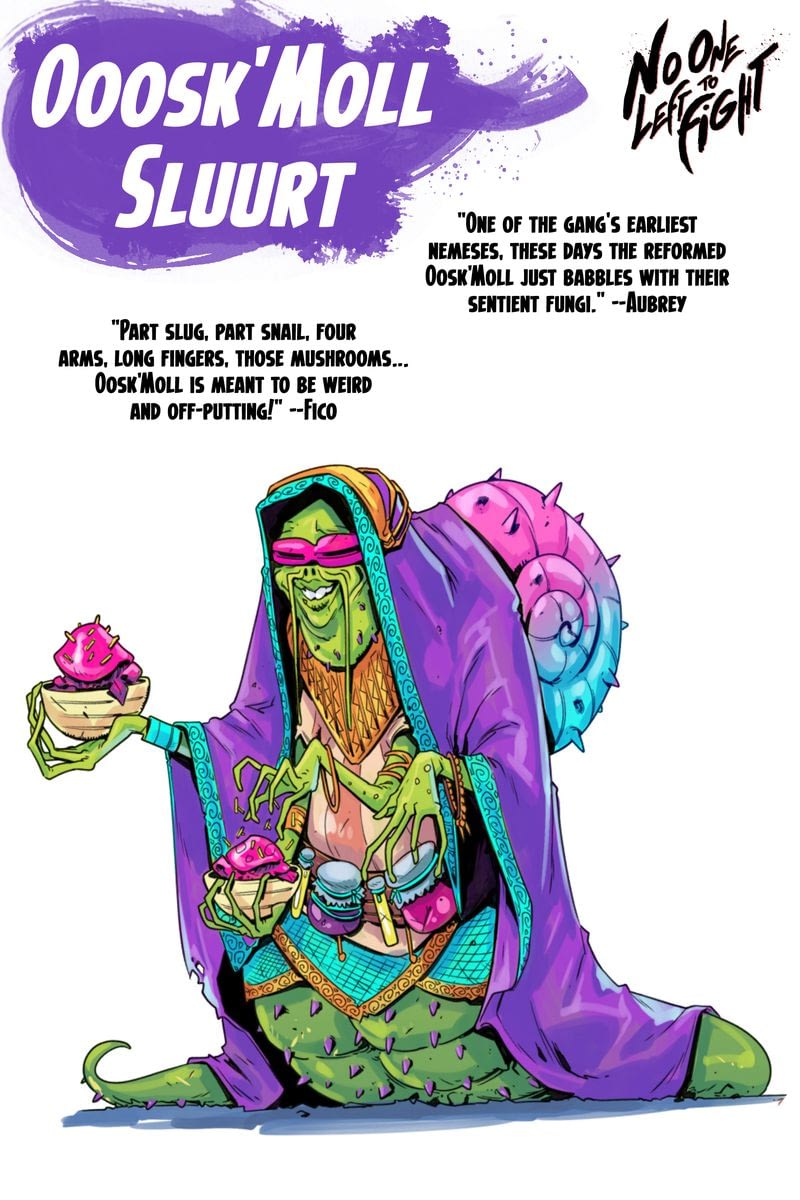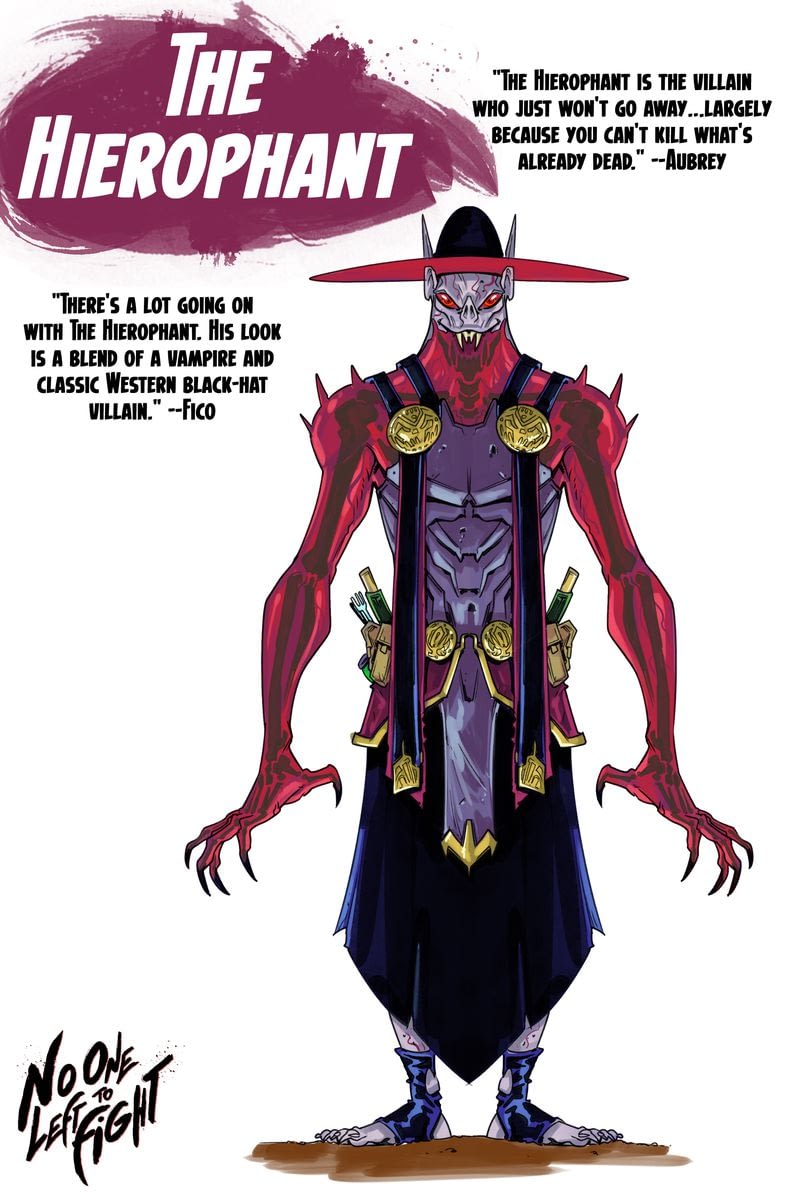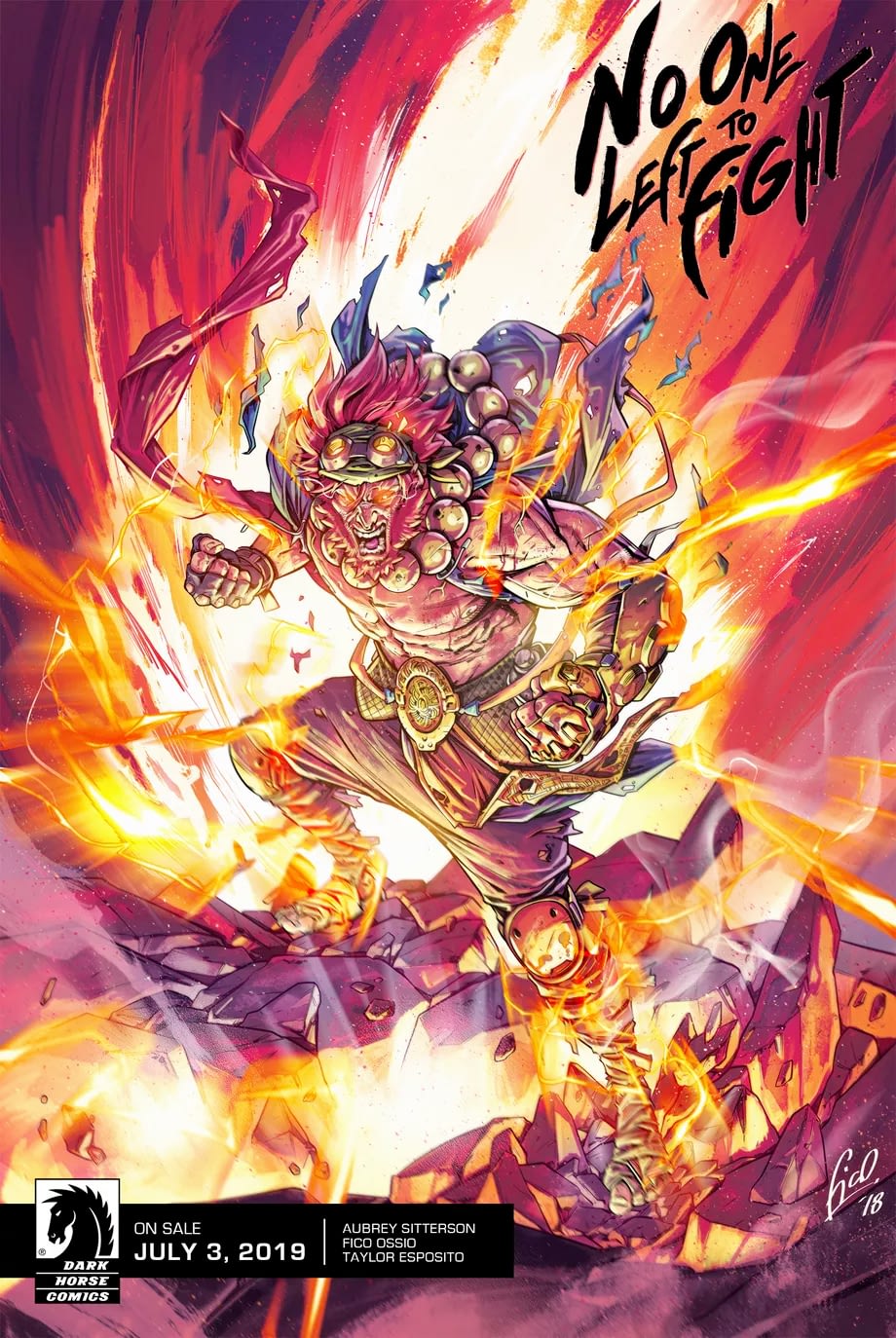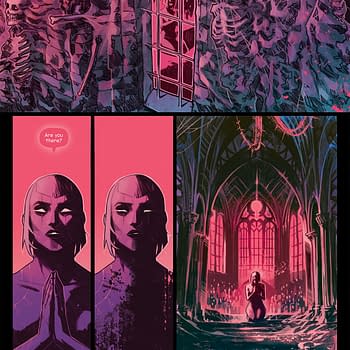Posted in: Comics | Tagged: anime, Aubrey Sitterson, dark horse, dragon ball, Dragon Ball Z, Fico Ossio, no one left to fight, Taylor Esposito
In Depth with Aubrey Sitterson and Fico Ossio on the Characters of No One Left to Fight
On July 3rd, Dark Horse Comics will publish the first issue of No One Left to Fight, the brand new series by writer Aubrey Sitterson, artist Fico Ossio, and letterer Taylor Esposito. What's it about? Well, pictures speak louder than words, so how about we let this brand new image featuring all the characters from the series, debuting EX-X-XCLUSIVELY here on Bleeding Cool, do the talking (click it to open bigger in a tab).
That being said, words are good too, so here's how Dark Horse describes the comic:
Since childhood, they've saved the world time and time again. But now, as adults, with their epic battles and confrontations behind them, what's left for them? Writer Aubrey Sitterson (The Comic Book Story of Professional Wrestling) and artist Fico Ossio (Marvel Action Spider-Man, Skylanders) are teaming up to answer that question in No One Left To Fight.
From the publisher that brought you Hellboy and Black Hammer comes a new globe-spanning story! Taking inspiration from classic manga and anime, No One Left To Fight is a tale of regret, resentment, and growing older as a team of heroes grapple with what their purpose is in a world that no longer needs their protection.
And the only thing better than pictures and words are more pictures and more words, so your pal Jude Terror spoke at length with Aubrey Sitterson and Fico Ossio about No One Left to Fight, and in particular the characters and designs of the new five-issue series they're calling "The Comic You Always Wanted."
So tell me guys, how did the idea for No One Left to Fight come about, and how did it develop as you collaborated with each other?
Aubrey: It all started at San Diego Comic-Con in 2017. Fico and I had been wanting to work together for a while, and were standing on the floor chitchatting about it when we heard a constant stream of "power-up" screams coming from the Funimation booth. We realized that we both absolutely adored Dragon Ball, and we were off to the races.
Fico: We were both eager to work together and had been trying to make it happen ever since I did Revolution, but our work-for-hire stuff just never lined up. So, we figured why not just do our own thing? The concept started from our Dragon Ball fandom and the desire to do a "road trip" story. We went back and forth a ton before we even started putting the pitch together – it was really collaborative, with both of us suggesting ideas, riffing, and building off each other. It's been a really special experience. I don't think I've ever had more fun creating something.
Aubrey: The riffing and collaboration is such an important part of No One Left to Fight. We spent so much time adding and building and refining and fleshing out this world. We keep calling it THE COMIC YOU ALWAYS WANTED, and we know that it's true – that it's more than just marketing speak – because it's the comic that WE always wanted.
When announcing the comic, Aubrey likened it to taking "everything we love about the greatest fighting series of all time, Dragon Ball" and creating something new that's "a story about growing older, coming to grips with the choices you've made."
But isn't Dragon Ball Z about the characters from Dragon Ball getting older and having kids? See, I learned that from my research because — and this may shock you — I've never read or seen a single Dragon Ball product in my life. So for someone completely ignorant of Dragon Ball and the whole genre really, can you explain what you mean?
Fico: While all the characters grow and change in Dragon Ball Z, Goku and Vegeta stay the same age and largely unchanged. Even as circumstances change and Vegeta becomes a hero, they always have the same goals: Getting stronger and finding new challenges to test themselves against. It's even established that Saiyans (like Goku and Vegeta) age really slowly, so they never really have to contend with old age, mortality, or realizing that they might have already peaked.
But our characters – Vâle and Timór – have aged. Their best years are behind them. And, as Aubrey put it, they've made choices along the way that they're now forced to live with. There're no second chances or turning back the clock.
Aubrey: So, Judey-poo, you're not wrong about Dragon Ball Z, and Super too for that matter – the series is chockablock with the children of the original cast. In fact, every iteration of the franchise explores the relationship and responsibilities of fathers to sons and vice versa. Those hints of angst and inner turmoil go on to inform and color the series' greatest fights and are the absolute best parts of Dragon Ball. You should read or watch it! Seriously!
We're borrowing some of that, obviously, but we're also amping it up, putting all those regrets and resentments front and center in a way that, naturally, leads to big, explosive action like only Fico can depict. While Dragon Ball uses the inner turmoil to give meaning to the fights – a totally awesome approach that I love – we're doing the opposite, using the fights themselves to explore and deepen that inner turmoil.
Fico, I love the character designs, how bright and colorful they are, and all of the little details on the character teasers. I especially like the way the characters' various accessories or weapons play into their personality or backstory. Can you walk us through the process of how you designed some of these characters? What were some of the visual references you drew on? And which ones were your favorites to design?
Fico: Thank you so much! "Bright and colorful" was always the goal – we wanted the designs to contrast with and intensify our more grounded story. I also designed the characters to evoke my favorite manga designs, which usually lean toward the over-the-top and bizarre. My designs always have a lot of detail, but it's never just for looks – everything, even the stuff hanging from the characters belts, has a backstory and a reason for being there. We really wanted the characters to feel real and part of a lived-in world.
From the beginning, I knew that Vâle would have a monk look about him, while Timór had more of a ninja vibe. My favorite to design was probably Krysta though – she was the first to deviate from the "martial arts character" theme. Plus: ROBOT ARM! The rest of the characters came about organically, growing out of the story as we developed it, while keeping in mind that we wanted each of them to share certain elements, but also remain unique, both in design and background.
Aubrey: Too often in comics development, character design happens last, but with No One Left to Fight, Fico's designs have really guided the story. Whether it's the little gourds the characters carry around or the championship belts that Vâle and Harga have, so much of what you'll read in the comic grew out of Fico's vision for how the characters would look. Another great example is Krysta's companion octopus, Pod. As soon as I saw him, I knew that he'd have to play a more important role in the series than we'd originally planned.
Out of the cast, which of the characters' personalities do you each relate to the most?
Fico: This is actually a really personal question! I relate to Vàle in a lot of ways. I used to play a lot of sports when I was younger, up until I was 30 and suffered a knee injury (not a Skyrim joke!) and never really came back from it. So, I definitely relate to Vâle's struggles!
Aubrey: One of my favorite books is Aldous Huxley's Point Counter Point. It's got a massive cast and each and every one of the characters is so very relatable, in large part because you can tell that they're all ciphers for different aspects of Huxley's personality. It's a fascinating way of building a cast – splitting up parts of yourself into different characters and amplifying all those emotions – and it's something I've been utilizing in No One Left to Fight. It might sound odd to say about a book about superpowered fighters, but it is, without a doubt, the most personal comic I've ever written, as every one of the characters is struggling with emotions, regrets, and resentments that I'm intimately familiar with.
It's a total cop-out, but truthfully, the answer is "Whichever one I'm currently writing."
It looks like the dynamic between Vâle, Timór, and Krysta is an important part of the story in No One Left to Fight. What can you tell us about the dynamic between these three characters and how things got to be the way they are? And what are some other important relationships we should be paying attention to?
Fico: That relationship definitely serves as the core of our story – their journey together sees a lot of rising tensions between Vâle and Timór, and Krysta is right in the middle of it.
Aubrey: It's a love triangle. Krysta is happily married to Timór, but Vâle is still carrying a torch for her. It's also a lot more than that, however, because of the competitive rivalry between the greatest fighter in the world, Vâle, and the perpetual runner-up, Timór. Even though they both have something the other desperately wants, they can't get over the one thing they can't have. I think there's something profoundly tragic about that.
Fico: Another fascinating relationship is between Mistress Harga, Timór, and Mistress Riellda. Not only did Timór leave Harga's school, but he did it to go study under Riellda, with whom Harga shares a tumultuous, intimate past. None of them have ever forgotten it.
Aubrey: Outside of the central love triangle, my favorite of the many interlocking relationships in No One Left to Fight is that between Vâle and Winda. Writing their scenes together I really fell in love with Winda, which I wasn't expecting coming into the series. I actually started to tear up some while writing issue #3, which had never happened to me before. There's a lot of raw, real emotion going into this thing.
It's obvious from the details in the designs and the short blurbs on the character teasers that there's a backstory in mind for each of the characters, and there's a lot you can infer from their relationships just from those teasers. How much of that backstory are you planning to get into in the five-issue series?
Fico: As much as we can! And hopefully even more in the future! I think all those backstories are what make the characters so real and relatable. We aren't going to just lay it all out for you though – there's a lot of subtlety involved, so you'll have to read between the lines.
Aubrey: I started watching Dragon Ball with Z – I'd rush home from school to catch it on Toonami. One of the things that immediately struck me was that the story had clearly been going on for years! There were a ton of characters, they all knew each other, and there was an immense amount of backstory that obviously mattered and would be frequently referenced, but was never clearly laid out in any kind of exposition-heavy fashion. We wanted to recreate that in No One Left to Fight.
So, while Fico and I have worked out decades worth of history and backstory for these characters (and some you haven't even seen yet!), we don't plan on grinding the action to a halt to explain it. You'll get what you need, for sure, but running up against lacunae in the backstory and being aware of what you don't know is not only intentional, it's part of the appeal! We want to leave you yearning for more.
How do Vâle, Timór, and Krysta stay in such great shape, especially Timór and Krysta, raising two young kids? Both kids and maintaining abs are full time jobs, aren't they?
Fico: Isn't it obvious? They do the One Punch Man training routine: 100 push-ups, 100 sit-ups, 100 squats and 10 km running. EVERY SINGLE DAY!
Aubrey: Besides, everyone knows that abs are made in the kitchen, Judey-poo.
Most of the character teasers focus on what (I assume) are the heroes and their allies or mentors, with only one, The Hierophant, obviously a villain. Can you tell us a little more about the Hierophant, both what inspires his design and form and what motivates him personally? And are there more villains we should look out for?
Fico: The Hierophant sort of took on a life of his own as I was designing him. I started with a classic Western outlaw design, but it sort of grew into this vampire look…which I think people will find fitting once they see him in action. I wanted him to feel ancient and timeless – that's why I gave him translucent skin in places. It also doesn't hurt that it looks super creepy! I shouldn't give away too much about what he is exactly, or what he wants, but man, when Aubrey gave him his voice and the lines he utters…it gives me chills. He's the most awesome villain we've got, but he's not the only one. You'll definitely be seeing a couple more.
Aubrey: The Hierophant is another example of a character whose identity really grew out of Fico's amazing design. I feel like we don't even need to say much about him because looking at him you understand everything you need to know about this guy, especially since what you don't know about him, the mystery that surrounds him, is so important.
There were some other villains in those character designs though too! The Fungus Mogul Oosk'Moll Slurt and the inseparable duo of Quon & Kaya! Though they're friendly allies now, all of them started off as villains that our main trio faced growing up. That's always been one of my favorite aspects of Dragon Ball – how they don't just beat their foes, they rehabilitate them and turn them into friends – so we definitely wanted to use that in No One Left to Fight!
In the super cool new promo image DEBUTING EX-X-XCLUSIVELY TODAY ON BLEEDING COOL!!!, there are some characters we haven't seen yet. Can you also share any EX-X-XCLUSIVE DETAILS on anyone we're seeing first here? Or at least tell me what the cat guy with the guitar's name is?
Aubrey: Oh man. I can't tell you how thrilled you are that your eyes went directly to the intergalactic rock star himself, none other than Billy Von Katz. He's one of my absolute favorite characters in the series, he has quite possibly the coolest backstory in the entire NOLTF universe, and best of all: We've got something very special planned with him for release day, July 3! So, keep your eyes peeled!
Fico: There's a dark character looming over the top of the image – that was a real challenge to design. He's a huge threat from our character's past, so he had to be dark and scary. While The Hierophant is creepy and evil, he's got a more "mystical" vibe to him and is actually pretty charismatic! This villain needed to feel more like something out of a horror movie: Brutal and violent and relentless. Like all of our characters, he's got a backstory – his origin even has some connections to the rest of the cast. I put some clues in the design, but we'll see if anyone can figure it out!
I know it's early on in the process here, but assuming this is as big a hit as it deserves to be… will you make more volumes?
Fico: Obviously we want No One Left to Fight to be a massive success for a bunch of different reasons, but the biggest one is that we have so many more stories to tell with these characters! I don't want to give anything away, but I think people are going to read the last page and immediately demand more, and when they do…we'll be ready!
Aubrey: That's the dream! Not only have we built out decades of backstory, but we've also got tons of material for future volumes – every few days we email each other with ideas for follow-up arcs, prequels, one-shots…you name it. After all, a key component of being THE COMIC YOU ALWAYS WANTED is that there's enough to keep you coming back for years.
With such a unique blend of influences behind No One Left to Fight, who do you see as the target audience of the book?
Aubrey: I know that the stuff we're talking about might seem like unique or even unusual influences for an American comic book to be drawing from, but this stuff – shonen manga generally and Dragon Ball specifically – is deeply, deeply embedded in pop culture. Not just the decades of Dragon Ball, Dragon Ball Z, and Dragon Ball GT manga and anime that people grew up with, but the current, explosive popularity of Dragon Ball Super and the Broly movie. And beyond even that, Dragon Ball FighterZ is the most popular fighting game in the world right now!
Fico: I'm Argentinian and both manga and anime are huge here – especially Dragon Ball Z. And it spans multiple generations! I went to see the Broly with my cousin. Both of us are huge fans of DBZ, but there's a full 20 years in between us! This stuff is so important and foundational not just to me, but to pop culture at large. I've always wanted to work on something that wears those influences proudly on its sleeve, and I know there's a huge audience out there that's going to respond to it. It's something familiar and beloved, but presented in an entirely new way.
Aubrey: These concepts and archetypes and tropes have taken up permanent residence in the cultural zeitgeist – we're talking mainstream saturation here. And what that means is that while No One Left to Fight, THE COMIC YOU ALWAYS WANTED, is naturally going to thrill the regular Wednesday comic crowd, it's also going to hit a lot more broadly. Which is why I'm hoping retailers order enough copies for when all those hordes of current Dragon Ball fans, and new No One Left to Fight fans, come swarming into their shops on July 3! I know how much I love walking into a well-curated comic shop to pick up one thing only to leave with a half-dozen others as well, and I want all of our readers to have that experience for themselves.
NO ONE LEFT TO FIGHT #1 (of 5)
MAY190237
(W) Aubrey Sitterson (A/CA) Fico Ossio
They've saved the planet countless times, but what happens after the final battle has been won? Creators Aubrey Sitterson (The Comic Book Story of Professional Wrestling, G.I. Joe) & Fico Ossio (Spider-Man, Revolution) take inspiration from the legendary Dragon Ball to tell a story of regret, resentment, and growing older, one that asks, "What does a fighter do when there's no one left to fight?"
In Shops: Jul 03, 2019
SRP: $3.99


